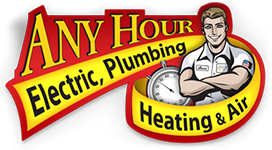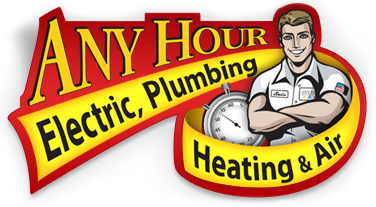Are Your Drains Trying to Tell You Something?
You’ve heard it before: hindsight is 20/20. Looking back, we tend to see with perfect clarity what we should have or would have done, had we known what was coming and had we been looking for the signs. In the case of your main line, a full backup can be costly, extremely messy, and a huge inconvenience. However, usually the signs are there, letting us know there’s trouble lurking. Here are the 4 ways your drain might be telling you there’s a problem and what you can do about it before it’s too late.
Before we begin, it’s important to understand some basics about the way a main drain works. Your home plumbing system is gravity-fed, which means everything moves downhill to lead all sewage out of your home and into the city lines. Additionally, your sewer main line is the largest drain in your system. If there’s a problem that got through every other smaller drain in the house, there’s likely something happening in the main drain. With that in mind, let’s get into the warning signs:

1. COMPLETE BLOCKAGE
One common cause for drain trouble is a complete blockage. Something totally obstructing your drain could be an easy fix or it could mean, if you already had slow drains, that it didn’t take much to stop it completely. Coupled with a restriction, these complete blockages could happen all the time.
In the case that you haven’t previously experienced slow drains and find a drain suddenly blocked, this could be caused by common things like too much toilet paper or accidentally sending toys or other things down the drain. This is easily remedied: all it takes is removing the obstruction. Sometimes this requires the tools and the assistance of a licensed plumber or drain technician; other times, if the clog isn’t too deep in the system, you might be able to snake it out yourself.
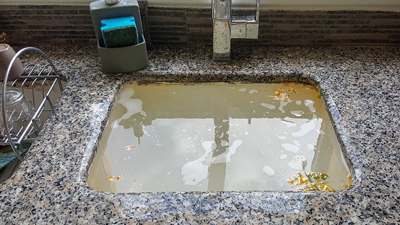
2. SLOW DRAINS
If you’re experiencing slow drains that cause frequent blockages or frequent annoyance, this could be an early sign of a backup. However, similar to complete blockages, this could be something local, caused within the plumbing of your home, or it could be something larger, stemming from the main drain.
Reduction of flow from buildup of either grease, fats, soap scum, hair, etc. decreases effectiveness of the drain. In this case, prevention is often key to making sure you’re not causing your own plumbing problems. PUBLIC SERVICE ANNOUNCEMENT: your drains are not trash cans. Here’s what this means:
- Don't send wrappers, hair, band-aids, Q-tips, feminine products, diapers, or other garbage down the toilet! Your toilet, your plumbing system, and the city drains are meant to handle human waste, toilet paper, and waste water only.
- Your kitchen disposal is a last-resort mechanism. Put all food waste, including pasta, bones, skins, peelings, etc. in the trash and use the disposal only when necessary.
- Don't send hair or any other trash down your sink, bath, or shower drains.
- Don't send grease, oils, or fats down any drains. These cause buildups in your pipes that lead to backups. These substances belong in the trash.
However, if you find that your drains are slow throughout the home and not just in a few, localized areas, this could be a sign of an impending backup. Particularly if you’ve been sending a lot of trash down your pipes over the years, this could be causing a backup in the main drain.

3. GURGLING
Think about how your body works. Imagine your indoor plumbing system is like the human body, then the main drain is your digestive tract. If you are experiencing indigestion, hunger, or stomach pain, you’ll feel it--and often hear it--in your gut.
If your plumbing is having a difficult time making it through the system, often you’ll hear gurgling or bubbling in the drains. It’s the sign of a struggle somewhere in the line. This is particularly true if you use one drain but hear the gurgling in another: for example, if you flush the toilet and then hear bubbling sounds from the sink or shower drain.
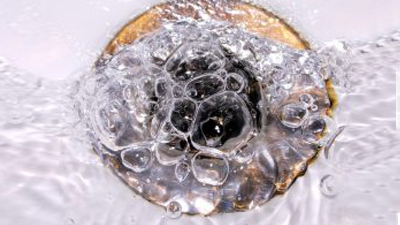
4. ONE DRAIN CAUSING A BACKUP IN ANOTHER
Remember how your system is gravity-fed? In your home, everything is flowing to the lowest level, where it connects to the main drain and then the city main line. On that lowest level, you’ll have a bathroom, a floor drain, or some other drain where, if you have a backup, this is the level where you’ll detect it first. So, if you have multiple drains on the bottom floor that are having issues, this could be a sign that there are problems with the main line. For example, if you flush a toilet and see the water coming up in the floor drain or in a shower drain, this could be a sign that you have bigger problems lurking in your main drain. If you have an issue with the main line, a plunger won’t simply fix the problem.
Watch for lowest-level clogs! If you have one of these kinds of clogs, these are warning signs of a backup. This is where your drain system is calling out for help. Pay attention to these signs so you can avoid a disaster.
Here are some common reasons for main line backups, restrictions, or blockages:
- Roots from trees, shrubs, or other plants that find a weakness in the pipe and grow into the main line in search of water.
- A belly in the line that disrupts the slope of the drain, causing the flow of sewage to slow
- Malalignment in the line due to ground settling or a mistake in the line.
- A partial or full collapse of the line. This could be because the line is old and made of failed materials or it could have been crushed or damaged by excavation, landscaping, or other factors.
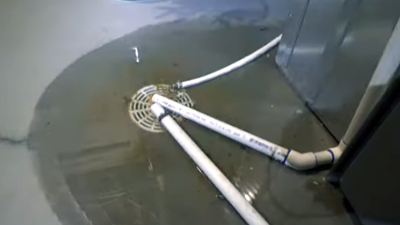
If you have a main line issue, call a main line technician who has the proper tools to truly diagnose the problem. To find out what’s going on, the first step is to send a snake down the line to see what’s causing the clog. You may even want or need to hydrojet the line to clear out clogs, buildups in the line, or other obstructions. Additionally, a trained technician could send a camera down the line to see what the real problem is.
Listen to what your drains are trying to tell you and don’t put off getting them checked!
Other helpful articles:
- Catch Those Leaks! Easy 7-Point Home Leak Inspection
- 10 Most Common Plumbing Issues
- 4 Ways to Make Your Water Heater More Efficient
- Water Heater Maintenance Tips
🎙️ Listen to Our Podcast - In the House
🎥 Watch our VLOG - Along For The Ride
Author: Amber Smith-Johnson
Copyright © 2021 by Any Hour Services
Apr 28th 2022
